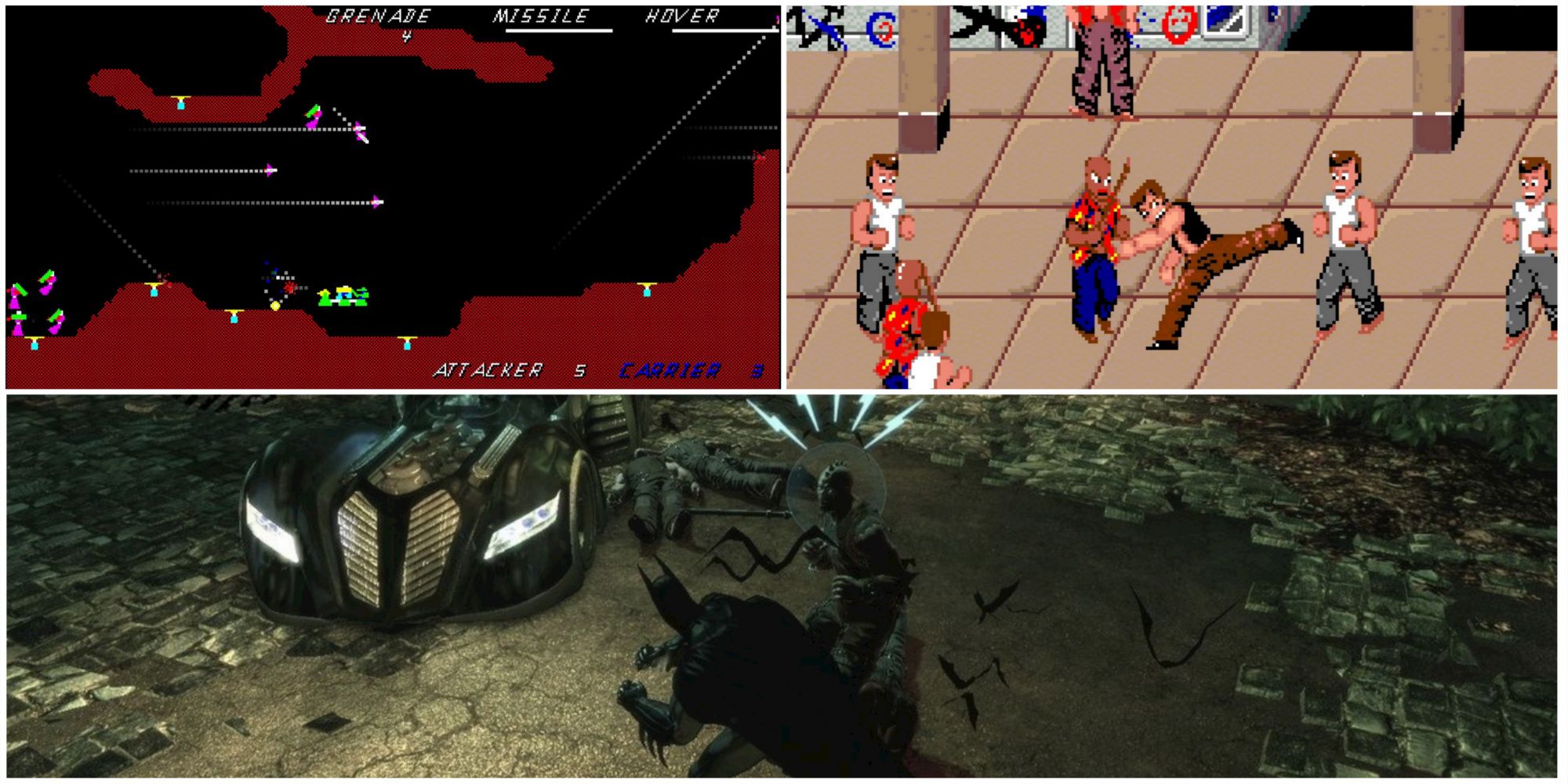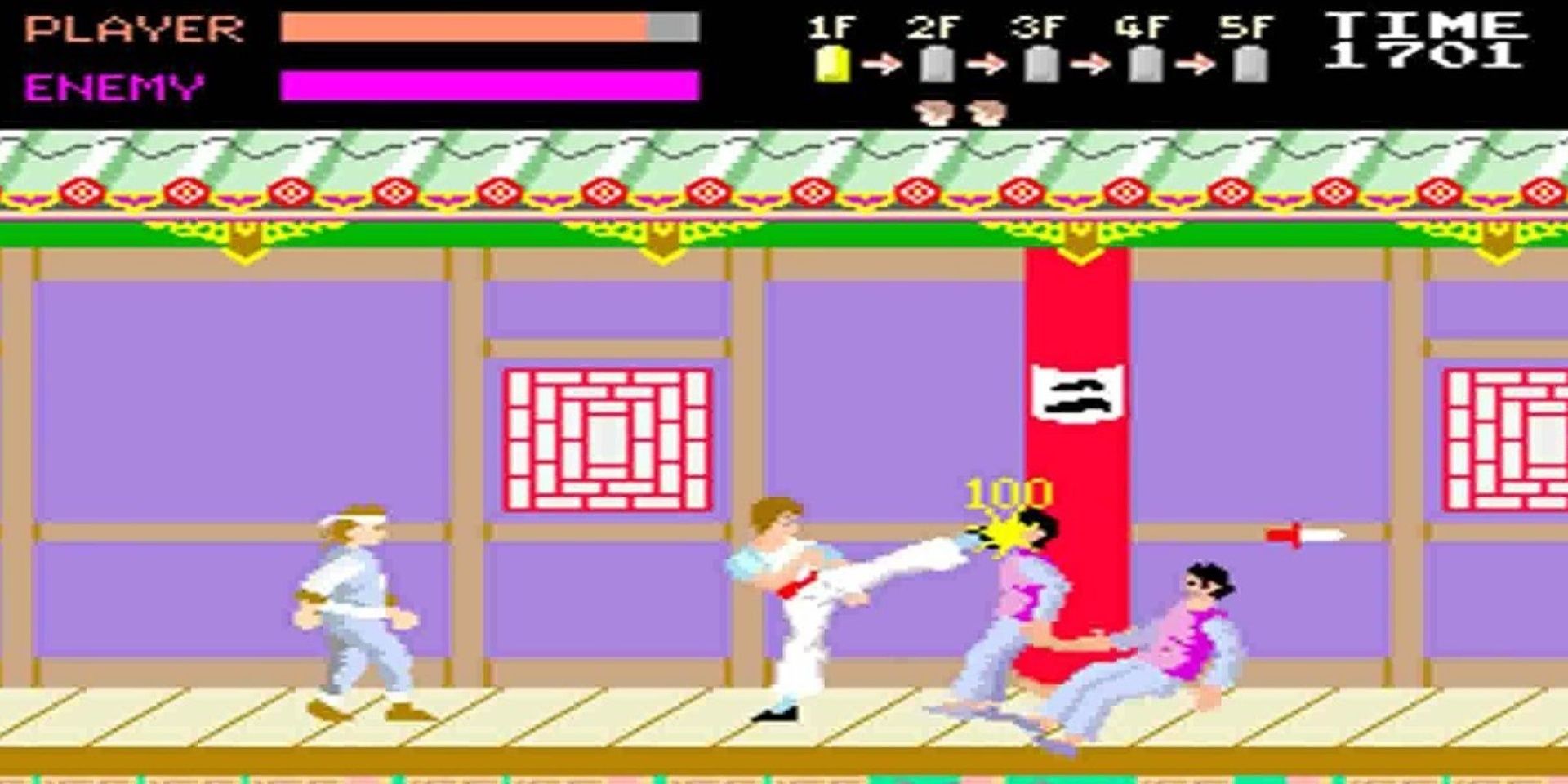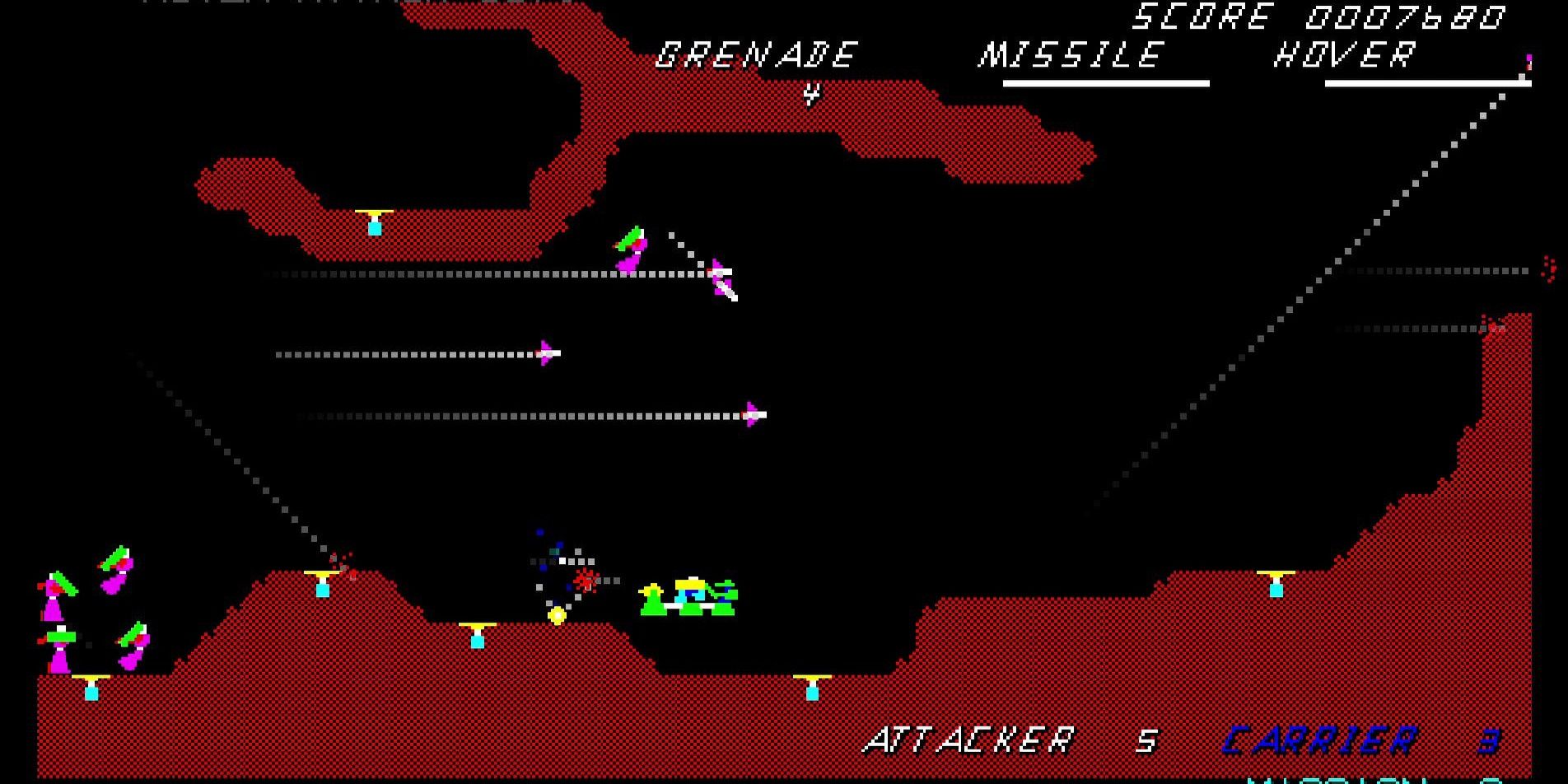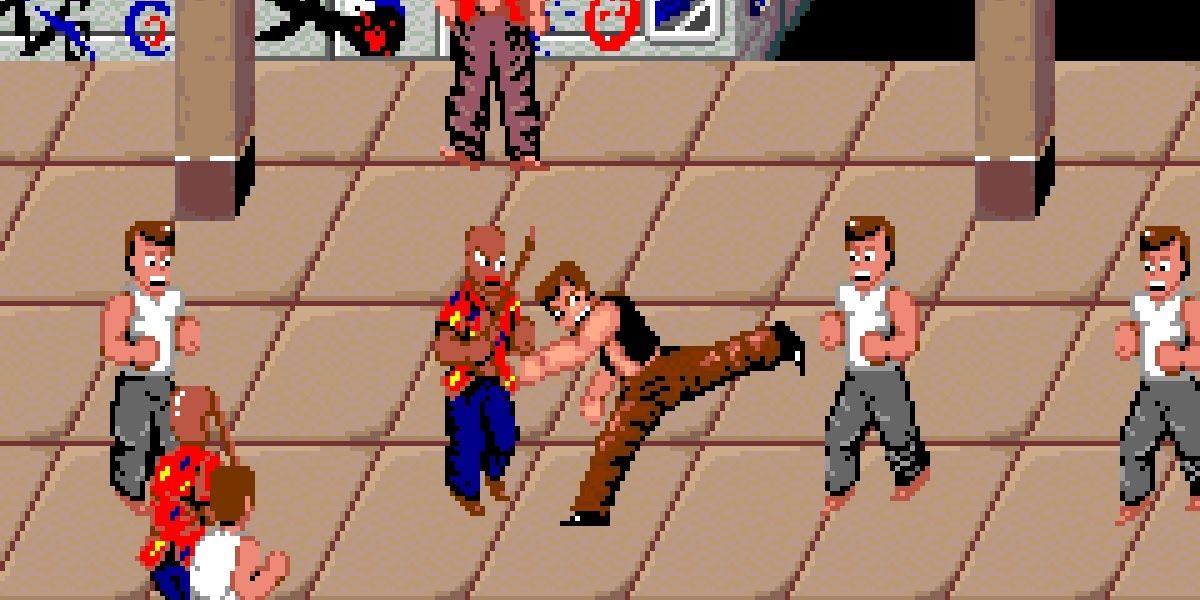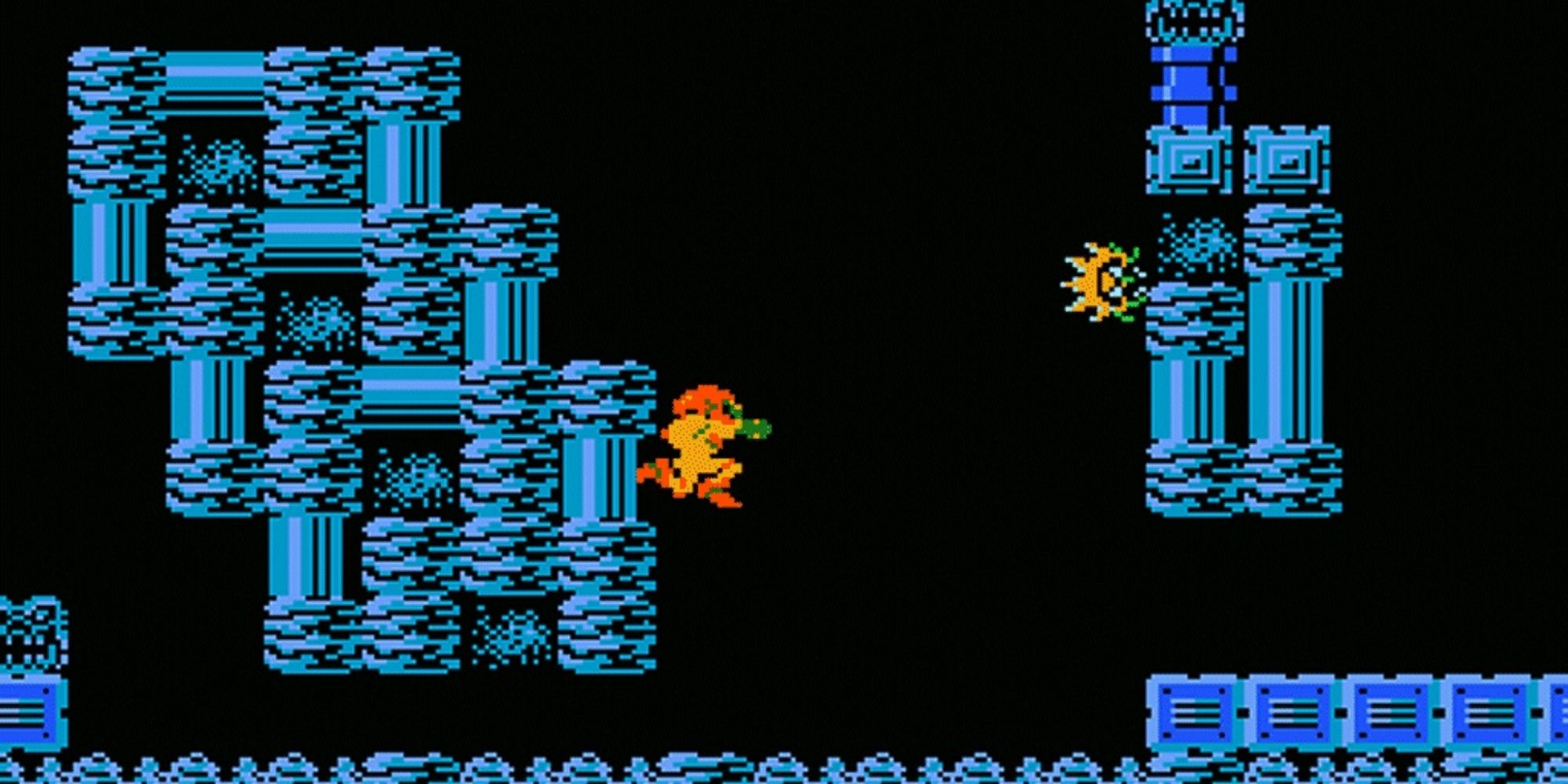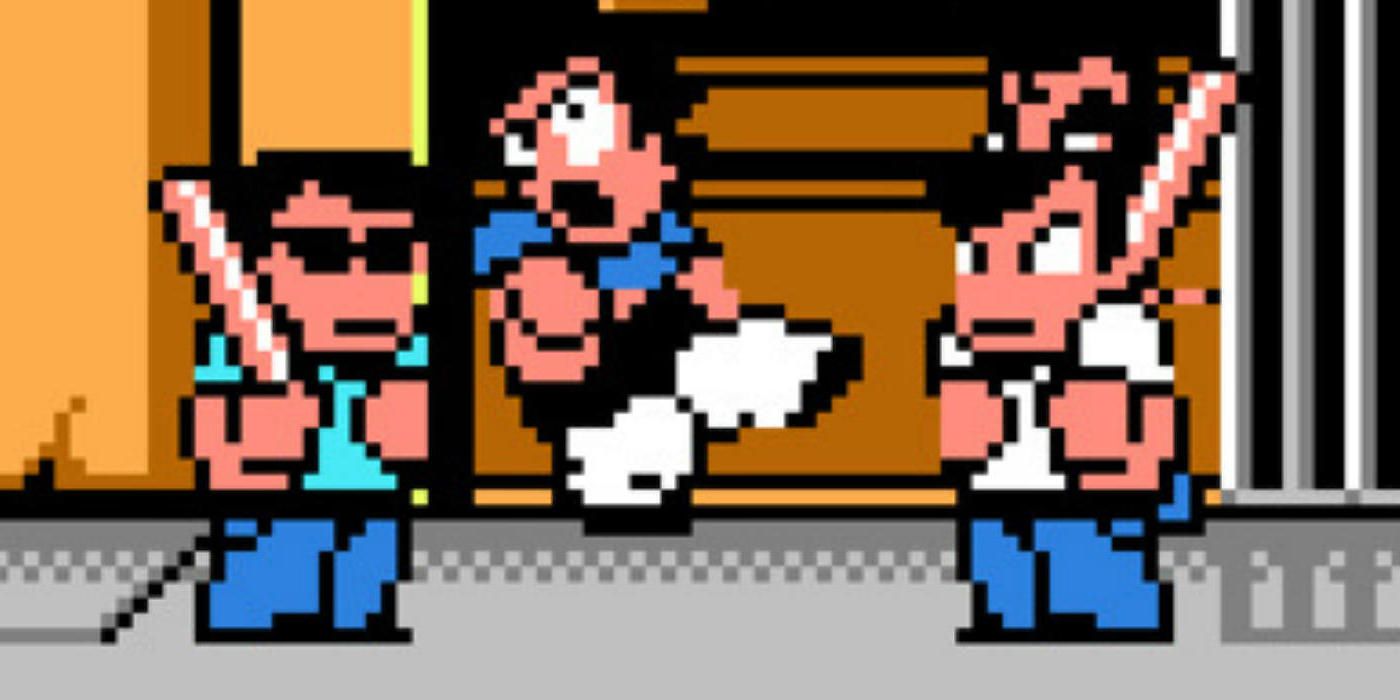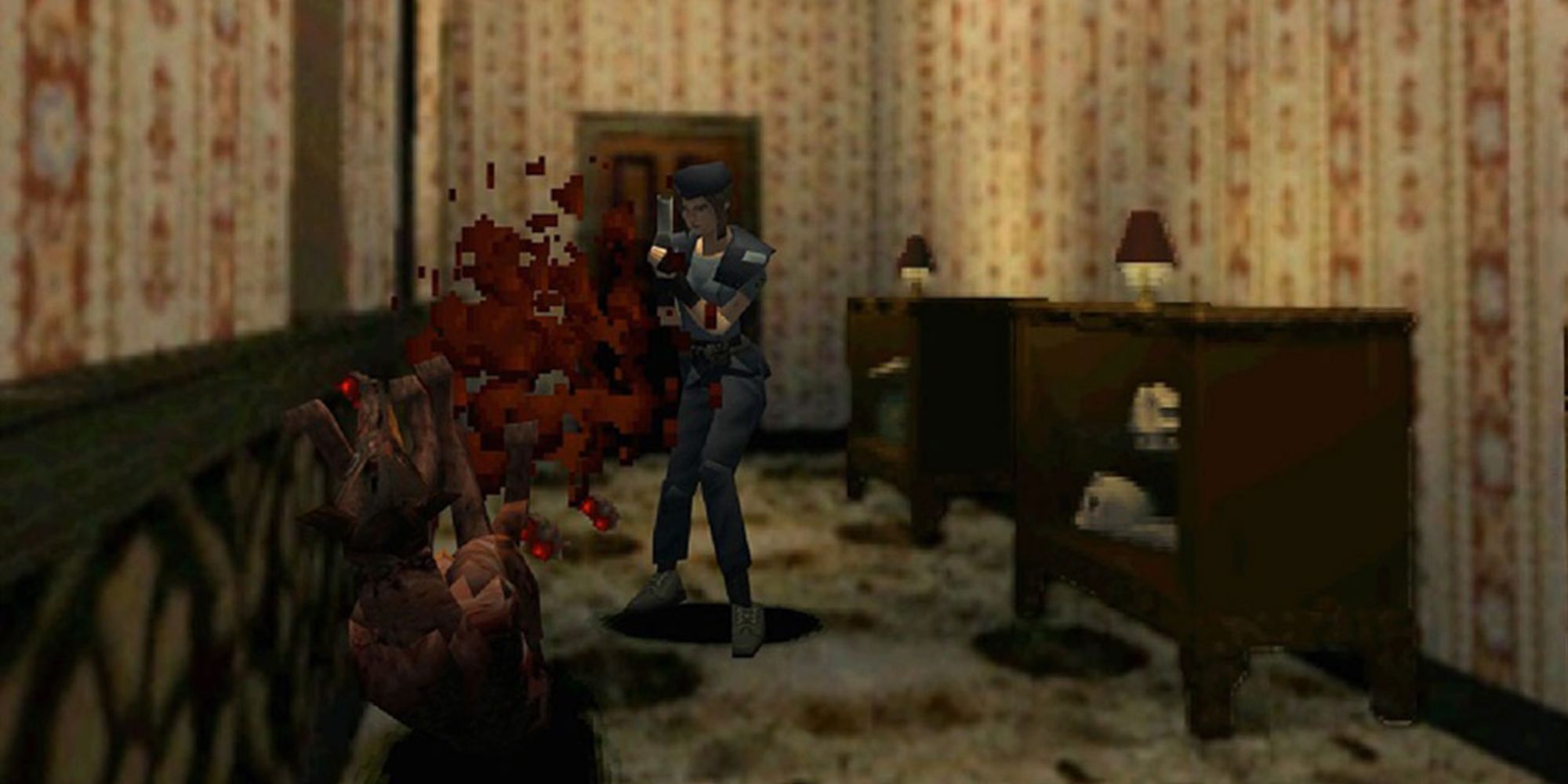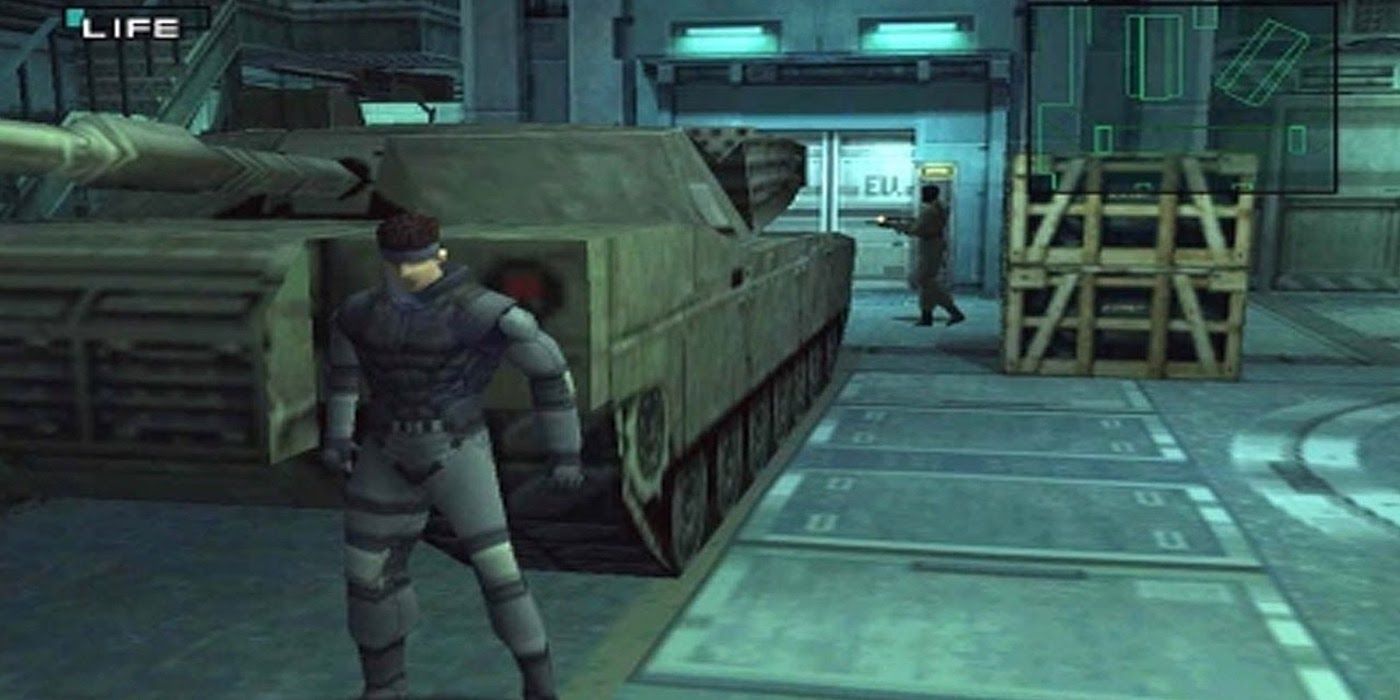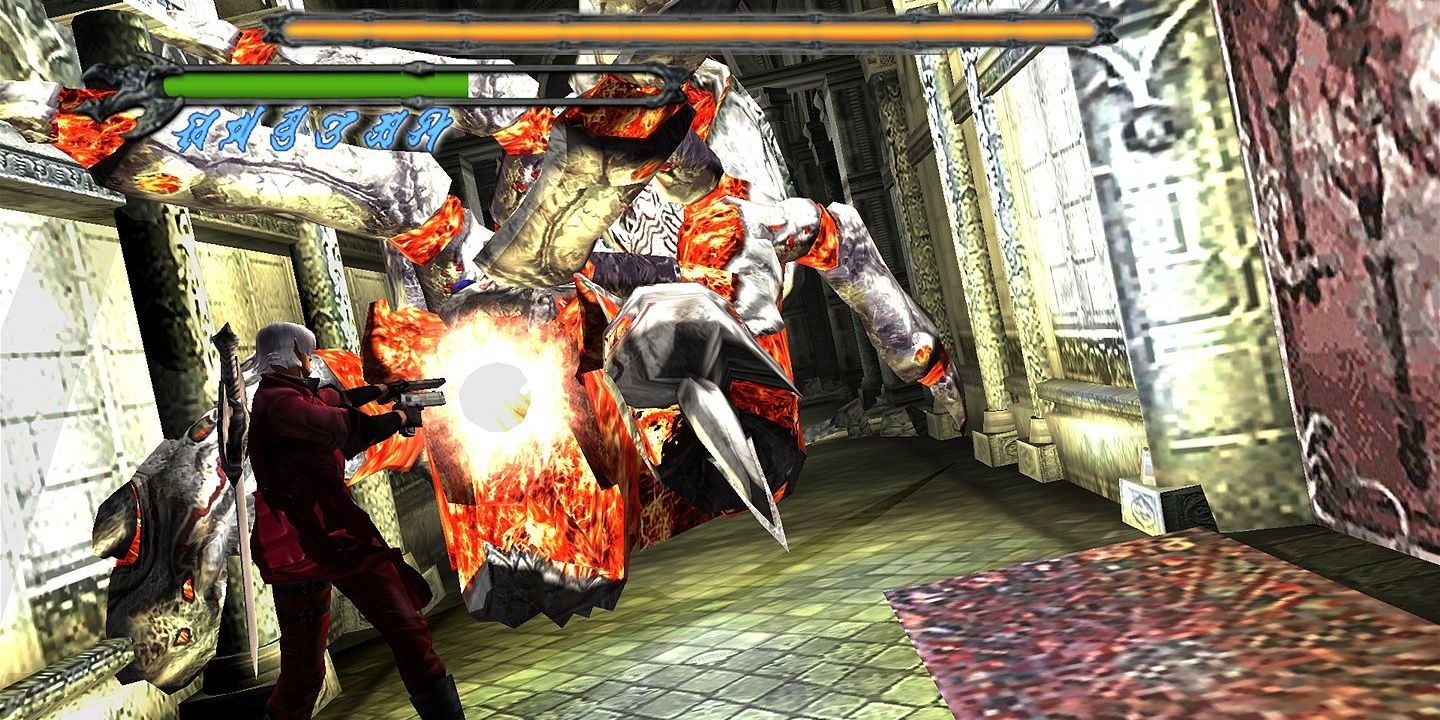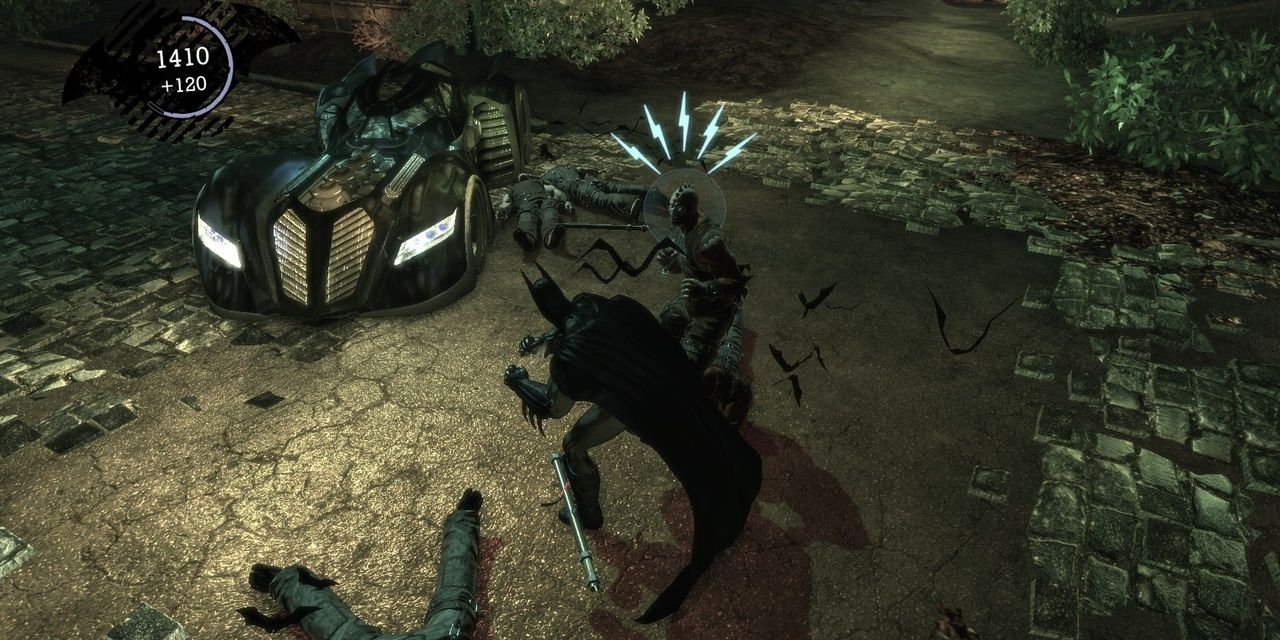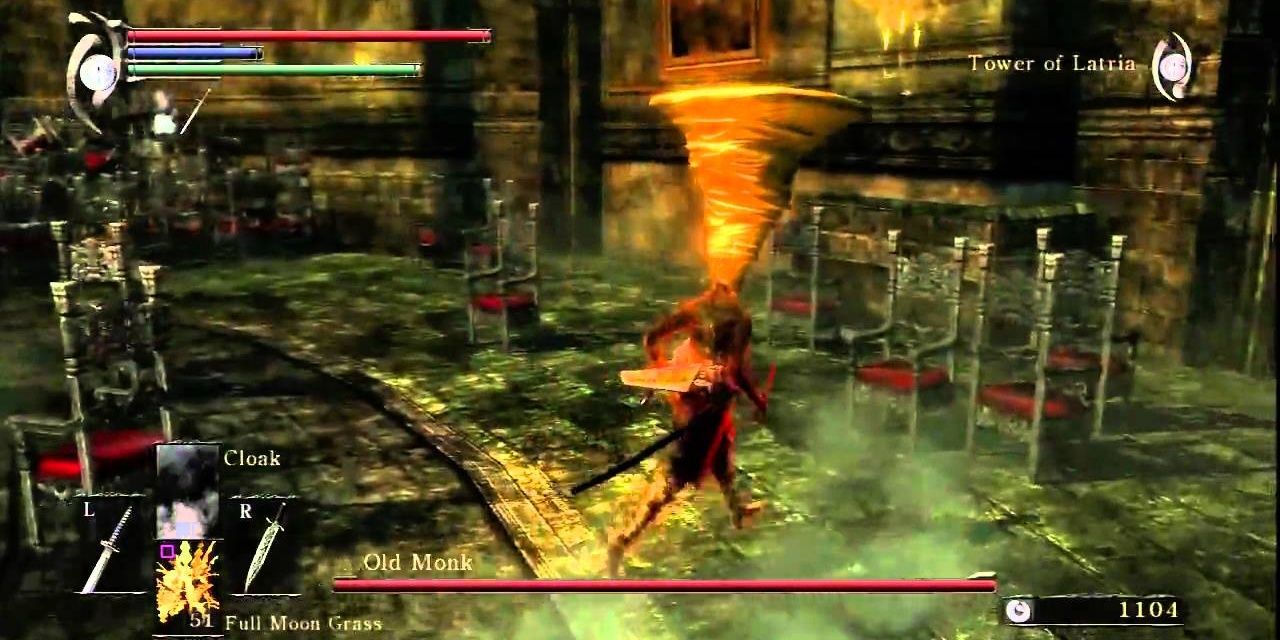Highlights
- Video games have evolved and different genres have risen and fallen over the years, from arcade games to RPGs and first-person shooters.
- Several iconic games have pioneered and influenced certain genres, such as Kung Fu Master, which created the sidescrolling beat 'em up genre, and Metroid, which introduced exploration as a key element in action games.
- Other influential games include Resident Evil, which popularized survival horror, and Devil May Cry, which introduced stylish hack 'n' slash gameplay. Batman: Arkham Asylum also innovated with its rhythm-based combat system, and Demon's Souls brought a more realistic approach to sword-swinging in a fantastical setting.
Video games have evolved a lot over the decades, with different genres rising and falling over the years. Getting high scores at arcade games used to be as alluring as completing Trophy/Achievement lists. Lightgun shooters fell to first-person shooters while RPGs went from being niche NES games to groundbreaking PS1 games that appealed to everyone.
Then there’s the action genre. Nowadays, it’s more of an umbrella term for all sorts of games that see the player(s) fighting foes in real-time. But it wasn't always so broad. Every journey begins with a single step, and these steps saw the innovative combat mechanics that created the subgenres fans love today.
10 Kung Fu Master
Made by Takashi Nishiyama for Irem, Kung Fu Master was originally a tie-in for the Jackie Chan movie Wheels on Meals, or Spartan X as it was called in Japan. Yet in practice, it played more like the Bruce Lee movie Game of Death, as Thomas has to progress up different floors on a pagoda against increasingly difficult enemies to save his girlfriend Sylvia.
It became the first sidescrolling beat ‘em up, as players had to master Thomas’ punches, kicks, jumping, and crouching attacks to get the better of a variety of enemies, from knife throwers to poisonous snakes. As basic as it is compared to newer games, Kung Fu Master still holds up quite well today. If creating one genre wasn't enough, Nishiyama would move to Capcom to create the modern fighting game Street Fighter.
9 Hover Attack
This one is fairly obscure. Googling the title will bring a few pages on GiantBomb and Mobygames, the occasional gameplay video, and a passing mention on the Wikipedia page for Bangai-O. Not even online lists for its primary machine, the Sharp X1 computer, mention it often. Yet it’s one of the more important titles around.
Earlier shooters, like 1982’s Front Line saw players move up the screen or move all around a static black screen like 1979’s Sheriff. But Hover Attack is one of the first, if not the first, to have players scroll right across different levels to shoot enemies down. It’s a simple move for a simple-looking game, but one that led the way for Contra, Turrican, Gunstar Heroes, and more.
8 Renegade
Kung Fu Master may have been the first, though it didn’t have a lot of moves. Just some swift kicks and punches. Technos improved upon its formula with Nekketsu Kōha Kunio-kun (“Hot-Blooded High Schooler Kunio-Kun”), better known in the West as Renegade. It was more popular on its original release, as its wonky controls weren't as intuitive as, say, Double Dragon.
Nonetheless, it expanded the brawler's move set with running strikes, throws, and weapons. It also used a ¾ perspective that allowed players to move up and down the stages as well as left to right. Renegade created the formula all future beat ‘em ups would follow, from Final Fight and Streets of Rage to The TakeOver and Final Vendetta.
7 Metroid
It wasn’t like the run & gunners were simple, but their formula certainly was. All the players had to do was run right and shoot everything in sight while dodging bullets. There wasn’t much exploration to be had, and the best weapons tended to be the ones that covered the most ground. Metroid changed all that, and let players know this by hiding its first big power-up left of the starting point instead of right.
It encouraged players to roam its world in all directions and to use any new items they got to access new areas, like freezing enemies to turn them into platforms. Alongside Vampire Killer, Castlevania’s more exploratory MSX port, Metroid created the “Metroidvania” or search-action genre, where scouring every inch of the world was as rewarding as the fighting.
6 River City Ransom
Though Sega’s Yakuza/Like a Dragon series came out during the boom for open-world crime games like Grand Theft Auto and Saints Row, it wasn’t aiming for the same market. If anything, both it and its spiritual predecessor Shenmue were walking the path set by River City Ransom, another sidescrolling beat ‘em up from Technos based in the Kunio-kun universe.
It had an open-world structure where the player could purchase health items or boost their stats to gain new moves on top of brawling with the different thugs on the street. It even had optional bosses for players to test their mettle on. Aside from inspiring Like a Dragon and Shenmue, its DNA can be seen in Scott Pilgrim Vs The World, and WayForward Tech's River City Girls series.
5 Resident Evil
Hitting/shooting things while avoiding getting hit/shot is a pretty standard concept for games. But some games carved their niche by making their gameplay about when and when not to strike. RPGs, RTSs, and the like considered this (Flee commands, etc), but aside from some early stealth games, action games encouraged getting in the enemy’s face.
Resident Evil only offered so many arms for players to use against the horrors in the Spencer Mansion. They had to consider when to use their weapons and watch their ammo as vigilantly as they did for the undead lurking around the corners. RE didn’t strictly invent survival horror (as Alone in the Dark fans may attest), but it became the most influential series in the genre.
4 Metal Gear Solid
Surprisingly, Metal Gear wasn’t the first stealth action game, let alone its 3D sequel. 3D Monster Maze and the original Castle Wolfenstein beat it to the punch in 1981. Yet neither they nor the original Metal Gear had as much impact as Metal Gear Solid did. Before MGS1, there was the odd stealth game like Sega’s Bonanza Bros, but they didn’t outsell the shooting games.
After MGS1, sneaking became a staple in nearly all action games from Tomb Raider to Uncharted. They offered their own tactical approach, where the player could do all sorts to get the drop on an enemy, move by without trouble, or mess around with them for laughs. The Metal Gear series would continue to expand the stealth genre, as would its rivals in Hitman and Splinter Cell.
3 Devil May Cry
3D graphics gave action games a new dimension to explore, albeit often with stiffer movement. As popular as Tomb Raider and Resident Evil were, their tank controls felt particularly clunky, especially after analog controls were introduced. Originally proposed as a Resident Evil sequel until it was deemed too action-heavy, Devil May Cry made full use of the smoother movement.
As its hero Dante, players had to mix up their moves, using those extra buttons and directions, to get higher grades for their combos (from “Dull” to “Stylish”). The higher the grade, the more orbs they’d earn, which could then be used to get more upgrades. It encouraged high-level play and was exciting to watch. It wasn’t long until other games like God of War and the PS2 Prince of Persia series followed in its stead, creating the hack n’slash genre.
2 Batman: Arkham Asylum
The hack n’slash formula was a potent one, with Sonic Unleashed spending half its time as a God of War clone via the Werehog. Then the Ghost Rider game was essentially DMC in Marvel clothing right down to the grading system. With the Batman license falling into Rocksteady Studios’ lap, they wanted to do something more to capture the spirit of The Dark Knight. Instead of styling on foes, Batman: Arkham Asylum’s freeflow combat played almost like a rhythm game.
As he built up momentum, Batman could swoop from one foe to another, knocking them down with hits, with a counter button to strike anyone trying to stop his pace. While it felt simpler than DMC’s tight frame setups, it wasn’t a button basher either. Players had to keep their momentum going and combos high to access instant takedowns and other techniques. It was more intuitive, and really captured what Batman’s multi-man brawls in the comics felt like.
1 Demon’s Souls
Being the first entry in a series means being less refined than the sequels. Demon’s Souls rarely gets as many kudos as the Dark Souls games or Bloodborne. However, those games wouldn’t be around today if FromSoftware didn’t test the waters with Demon's Souls, since its big contribution was a more realistic approach to sword-swinging in an otherwise fantastical setting.
No one in real life can do the superhuman tricks Dante, Kratos, and Bayonetta can do in their games. So players in Demon’s Souls can't do that either. They had to time their dodges and blocks just right to expose their opponents’ openings, and find ways to replenish their stamina after (or during) fights to keep going. As hard as it was, it was rewarding to play as each successful move felt earned, and each victory sweeter than the last.




